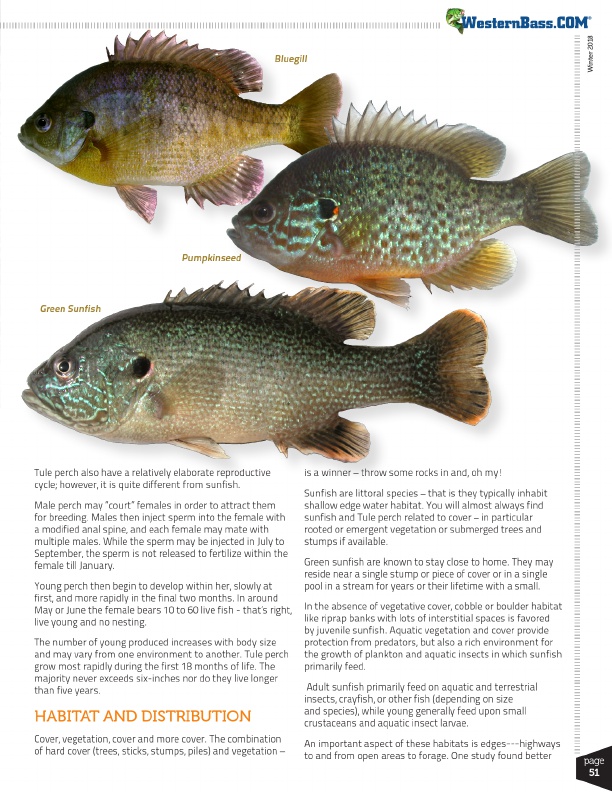
Bluegill
®
Winter 2018
Green Sunfish
Pumpkinseed
Tule perch also have a relatively elaborate reproductive cycle; however, it is quite different from sunfish.
Male perch may “court” females in order to attract them for breeding. Males then inject sperm into the female with a modified anal spine, and each female may mate with multiple males. While the sperm may be injected in July to September, the sperm is not released to fertilize within the female till January.
Young perch then begin to develop within her, slowly at first, and more rapidly in the final two months. In around May or June the female bears 10 to 60 live fish - that’s right, live young and no nesting.
The number of young produced increases with body size and may vary from one environment to another. Tule perch grow most rapidly during the first 18 months of life. The majority never exceeds six-inches nor do they live longer than five years.
HABITAT AND DISTRIBUTION
Cover, vegetation, cover and more cover. The combination of hard cover (trees, sticks, stumps, piles) and vegetation –
is a winner – throw some rocks in and, oh my!
Sunfish are littoral species – that is they typically inhabit shallow edge water habitat. You will almost always find sunfish and Tule perch related to cover – in particular rooted or emergent vegetation or submerged trees and stumps if available.
Green sunfish are known to stay close to home. They may reside near a single stump or piece of cover or in a single pool in a stream for years or their lifetime with a small.
In the absence of vegetative cover, cobble or boulder habitat like riprap banks with lots of interstitial spaces is favored by juvenile sunfish. Aquatic vegetation and cover provide protection from predators, but also a rich environment for the growth of plankton and aquatic insects in which sunfish primarily feed.
Adult sunfish primarily feed on aquatic and terrestrial insects, crayfish, or other fish (depending on size and species), while young generally feed upon small crustaceans and aquatic insect larvae.
An important aspect of these habitats is edges---highways to and from open areas to forage. One study found better
page
51